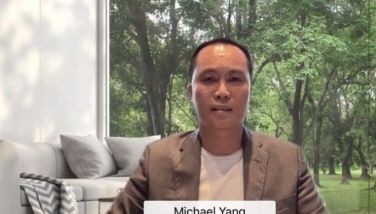A Noble case for Dr. Leon Chua
When I lived in the Bay Area, I have often been asked if I am related to Dr. Leon Chua. Dr. Chua is a legend of sorts, an IEEE Fellow and a professor of electrical engineering and computer science at the University of California Berkeley. Dr. Chua is considered by CNN to be the “father” of nonlinear circuit theory and cellular neural networks.
Dr. Leon Chua graduated from Mapua Institute of Technology in 1959 and went on to finish his S.M. at MIT and PhD at the University of Illinois, Urbana, in 1961 and 1964, respectively. He has earned many honorary doctorates and IEEE awards, most recently the Gustav Kirchhoff award — for his seminal contributions to the foundation of nonlinear circuit theory, and for inventing Chua’s Circuit and Cellular Networks, each spawning a new research area.
In 1971, Dr. Chua presented a seminal paper which “reasoned from symmetry arguments that there should be a fourth fundamental element, which he called the memristor (short for memory resistor),” in addition to the three basic electronic elements (i.e. the resistor, capacitor and inductor) already taught in physics and electronics classes. Indeed, with the inclusion of the memristor, these physics and electronic textbooks may be in need of a revision.
Recently, in a paper published in the May 2008 issue of Nature, HP Labs researchers Dmitri Strukov, Gregory Snider, Duncan Stewart and Stanley Williams reported that they were the first to manufacture the novel memristor circuit element.
The HP device is made out of titanium-dioxide thin film layers sandwiched between platinum electrodes. The upper portion of the memristor device is doped to be a conductor and the bottom layer acts as an insulator. The conductor is characterized by oxygen vacancies. And by running a current through these sandwiched layers of titanium oxide, one can literally move the vacancies from one layer to the other, and in so doing change the resistance of the material by 1,000 or more. The addition of this writing current can be said to change the state of the device to a logical “on” or “1.” Conversely, if one switched the polarity of current, one can return the device to the “off” or “0” state. HP has already tested the material in its ultra-high-density crossbar switches, which use nanowires to pack a record 100 Gbits onto a single die — compared with 16 Gbits for the highest density flash memory chips for instance.
The above description of a “non-volatile” technology using the memristor theory developed 37 years ago has crucial significance to the electronics and semiconductor industry as a whole. The electronics industry has reached the pivotal stage where scaling and integration of devices seems to be coming to a standstill, where “Moore’s law” — the doubling of devices and memory on a chip every 1.5 to two years — may finally slow or come to a halt.
The culprits are many: the increased variability of device features as we draw devices below the wavelength of our lithographic (printing) tools, the non-ideal matching of device features in a common silicon memory cell, the increased leakage of the device, and the dependence on capacitance as we scale dimensions of our smallest and most dense memory configurations.
The holy grail of the electronics industry is looking for an alternative to the venerable silicon Dynamic Random Access Memory (DRAM) — where new materials and “more-than-Moore” technologies will allow the continuance of “Moore’s law” and the scaling needed to continue progress of our current information-based global economy.
Currently there is significant research in material science on ReRAMs or Resistive change Random Access Memories, and their associated materials, which are candidates to replace DRAMs in the near future. There are also numerous startups and industry heavyweights pursuing the development of these new ReRAMs and similar memory technologies.
It can be reasoned that majority of these ReRAMs follow the digital and analog dynamics of Chua’s memristor element. And therefore due credit should be allotted to this Filipino immigrant in the United States and his insight into the electronics and the realm of nonlinear system theory.
Putting my possible relationships with Dr. Chua aside, if Dr. Chua’s seminal work in the field holds true for upcoming ReRAMs and their development, then in my opinion, I believe his work should be recognized in the most Noble of ways — with a Noble prize.
* * *
The author is currently an advanced technology director engaged in the development and design of IP and technologies for the cellular and mobile market.
- Latest


























